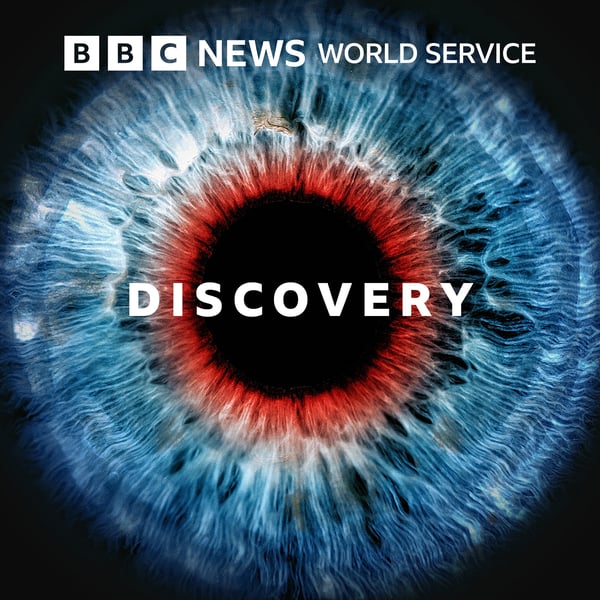Science Stories: Series 3 - Making the Earth Move
Discovery
BBC
4.3 • 1.2K Ratings
🗓️ 12 December 2016
⏱️ 27 minutes
🧾️ Download transcript
Summary
Prior to 1543 it was generally believed that the earth lay static in the centre of the universe, while the Sun, moon, planets and stars revolved around it in various complex paths, some even looping back and forth, as described by the Egyptian astronomer Ptolemy over a millennium before. This Ptolemaic system sat comfortably reconciled with philosophy and biblical scripture, not to mention immediate experience and observations.
In the 16th century astronomy and astrology were closely intertwined, as the art of predicting where the small dots of light on the night sky would appear had consequences if you were the sort of person who based your actions on horoscopes. But astronomers didn't have the right to start telling philosophers and theologians how the universe was actually constructed - what its mechanisms were - they merely observed the moving dots of light and used mathematics to predict where they would be the next night, week or month. This was an essential function for the Catholic church too - as the all-important date of Easter is based around a complicated lunar pattern.
But also at that time in northern Europe, Martin Luther and others had begun a protestant revolution, fundamentally questioning the authority of the Pope and Vatican.
It was an auspicious time for a fairly middle ranking Catholic cleric, Nicolaus Copernicus, working in a remote corner of northern Poland to drop a note around telling other astronomers that he'd worked out a new system that made for better astronomical calculations by making the moon travel round a spinning earth, and the earth and all the planets travel around the Sun.
If that were the true shape of the universe, the bible could no longer be literally true.
It took 30 years, but eventually a keen young Austrian mathematician convinced him to publish his book.
So a German radical protestant published a book by a mild-mannered Polish Catholic cleric, a book that allegedly simplified the cosmos, rightfully placing the Sun at the centre of our local universe, kicking off the scientific revolution and leading to the European enlightenment.
But as Phil Ball explains, the real story of 'De Revolutionibus Orbium Coelestium' - 'On the Revolutions of Heavenly Spheres' - is not quite as straight forward as all that.
Image: © BBC
Transcript
Click on a timestamp to play from that location
| 0:00.0 | Thank you for downloading from the BBC. |
| 0:03.0 | The details of our complete range of podcasts and our terms of use, |
| 0:07.0 | go to BBCworldservice.com slash podcasts. broadcasts. In 1543 an old man lies dying in a house on a hill looking out onto the bleak |
| 0:28.2 | Baltic Sea. He has in his hands a book when he has written himself. |
| 0:33.0 | Fresh from the printing press, it has only just reached him. |
| 0:37.0 | But he has suffered a stroke, and perhaps he is no longer able to read his own words. |
| 0:42.0 | The words tell of revolutions and a revolution is what |
| 0:46.2 | they will unleash. The Latin title had originally been simply de |
| 0:50.7 | revolutionibus concerning revolutions. But the German printer has added two more |
| 0:56.6 | Latin words of clarification, Aubium Celestialum concerning the revolutions of the heavenly spheres. This old man is just 70, but by 16th century standards that's fairly venerable. |
| 1:11.1 | In this episode of Discovery from the BBC, we'll get to the bottom of quite how much his book |
| 1:16.6 | changed our place in the universe. |
| 1:19.4 | He is Nicholas Copernicus, a cannon in the cathedral at Fromborg on what is now the Polish coast. |
| 1:26.9 | His lifelong interest has been in deducing how the heavens, the sun, planets and stars, |
| 1:32.3 | are arranged and how they move around each other. |
| 1:36.4 | To be honest, we don't know for sure that a copy of Copernicus' book printed that April |
| 1:41.3 | reached him before he died a month later, |
| 1:44.0 | although legend says it arrived on the very day of his death. |
| 1:48.0 | What we do know is that the book very nearly didn't get published at all. |
| 1:53.0 | It's quite possible that the details of Copernicus' |
| 1:56.0 | revolutionary idea of placing the sun, not the earth, |
| 2:00.2 | at the center of the universe, |
... |
Please login to see the full transcript.
Disclaimer: The podcast and artwork embedded on this page are from BBC, and are the property of its owner and not affiliated with or endorsed by Tapesearch.
Generated transcripts are the property of BBC and are distributed freely under the Fair Use doctrine. Transcripts generated by Tapesearch are not guaranteed to be accurate.
Copyright © Tapesearch 2025.

